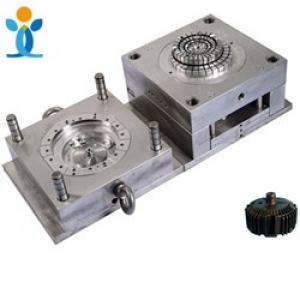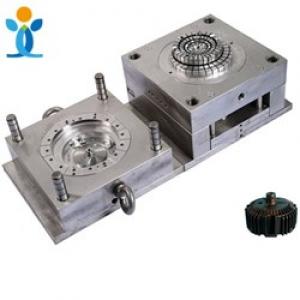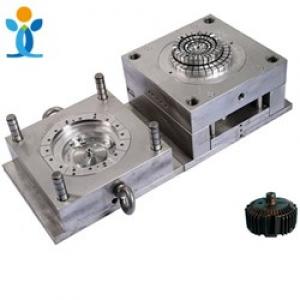second injection
The second injection can not only make the surface of the instrument full of softness, but also increase the product functionality and added value.
In the past 10 years, secondary injection molding technology has completely changed the aesthetic standards, design ideas and functional requirements of consumer products. Medical device manufacturers also recognize the potential advantages of this technology and continue to expand its application in the medical field.Secondary injection technology is known for creating "soft surfaces," but it also has many other functions, such as ergonomic design, two-color appearance, brand identity and feature improvement. With this technology, the functions (such as noise reduction, shock absorption, waterproof, anti-collision) and added value of the product can be increased.
Secondary injection, like co injection, double injection and sandwich injection, belongs to multi-material injection technology. The basic idea of multi-material injection molding is to combine two or more materials with different characteristics, so as to improve the product value. In this paper, the first injection material is called base material or base material, and the second injection material is called cover material.
1. Various secondary injection technology
In the secondary injection molding process, the covering material is injected into the upper, lower, surrounding or internal part of the base material to form a complete part. This process can be completed by multiple injection molding or embedding injection molding. The commonly used covering material is elastic resin.
Multiple injection molding: multiple injection molding is a good processing method for medical devices if the structure of the covering material allows. The technology requires a special injection molding machine equipped with multiple barrels to inject different resins into an injection mold. The barrel shall be placed side by side or L-shaped, and resin shall be injected into the mold by one or more injection points. When the same injection point is used, it is called coplasticity, and the composite parts produced are core resin materials covered by outer layer. When multiple injection points are used, it is called secondary injection molding. One material is molded on another material to produce a multilayer structure.
But multiple injection is not suitable for all products. In the second injection, the slider must be moved or the core must be moved to another cavity. Another method is to send the core to another injection molding machine.
Embedded injection molding: to produce fully covered injection handle products, embedded injection molding is required. In order to achieve full coverage, the substrate must be removed from the original cavity and placed in another core and cavity to inject the covering material.
During this process, the other mold should run on the same or another injection molding machine of different sizes (depending on the size of the injection part). Generally, the base material is much larger than the covering material, and preheating may be required to make the surface temperature close to the melting point of the covering material, so as to obtain the best bonding strength.
2. In mold assembly
Secondary injection molding is sometimes referred to as in mold assembly, because the two materials are finally completely combined together, not only to produce layered structure, whether it is a single part or component material, this technology can be used. Regardless of application, it is essential to ensure that the substrate and covering materials achieve the required mechanical or chemical bond strength.
3. Precautions for multi material injection molding
In general, to enhance the adhesion, the melting temperature of the resin of the covering material should be the same as that of the base material. If the melting temperature of the covering material is too low, the surface of the base material cannot be melted, and the bonding between the two is not strong enough. However, if the melting temperature is too high, the base material will soften and deform. In serious cases, the covering material will penetrate the base material, resulting in the failure of parts processing. Therefore, the selection of matching materials can ensure good adhesion.
In general, matching materials should have similar chemical properties or contain matching composite components. When the base material does not match the covering material, it usually can only form mechanical interlock, rather than chemical adhesion.
There are also some problems to be paid attention to in multi-material injection molding, the most common ones include: insufficient chemical or mechanical bonding strength between polymers, incomplete filling of single or multiple components, and flash flash of single or multiple components.
The injection molding machine must keep the injection consistency. In addition, the ratio of the injection volume of the injection machine barrel to the size of the injection part is also an important factor affecting the injection quality. This ratio is very important for all injection operations, especially in secondary injection. The check device can be divided like a sluice to cover materials. When the secondary injection materials are all metal, the check device is easier to operate. If the metal substrate and more elastic plastic, the check device is more difficult to operate.
4. Material selection
There are many factors in the selection of resin materials for secondary injection molding, one is the characteristics of the substrate, the other is the application performance. Specifically, there are the following:
Chemical resistance (in accordance with cleaning and other operating requirements).
flame retardant (in line with ecological and environmental protection requirements). Eco environmental protection sign is a sign that the product conforms to the environmental and social standards.
Wear resistance (to avoid sagging or falling off).
Shore hardness (compliance with softness or other requirements).
Medical specifications (FDA, USP class VI, ISO10993 and biocompatibility requirements).
Sterilization type (steam, gamma ray, etc.).
Impact resistance (in accordance with structural requirements).
Melting point (in accordance with the application temperature, no softening or deformation).
Bonding mode (mechanical interlock is formed when two materials are mismatched, and chemical bonding is formed when two materials are matched).
In the past 5-8 years, there has been a great development of covering materials, and a variety of elastic resins have been developed. For example, TPU, SEBS, copolyester, copolyamide, thermoplastic
The shore hardness of these materials varies greatly. Generally speaking, the higher the hardness of the material, the stronger the wear resistance. The texture of the material also affects the hardness. For example, when the spinning wheel is tested, the resin with high hardness will wear less, so the material with high wear resistance is often selected.
The hardness of SEBS resin is very low, less than shore a 30, and the hardness of TPU resin is about shore a 60, similar to that of human hand. In the past, plasticizer or mineral oil was used to reduce the hardness. However, these additives will precipitate (or frost) during cleaning or use, which does not meet the requirements of medical applications.
Due to the development of resin materials for secondary injection molding, the selection range of base materials is increasingly wide. At present, it has included: acrylonitrile butadiene styrene, polycarbonate and nylon. The expansion of material range provides more space for soft design. But the application of new materials also brings new problems, such as material adhesion, component design and mold operation.
5. Process design considerations
In the process design of secondary injection molding, check device, nozzle hole, air outlet and mold surface texture are the key elements.
The check device between the base material and the covering material is very important for the bonding effect. It is necessary to avoid the gradual thinning or burring of the projecting covering material. If the covering material is too thin, it will lead to poor adhesion, degumming and curling. Good check device design shall clearly separate the covering material from the base material. This design is used in the substrate recess in Figure 1.
Nozzle hole design is also important for the success of secondary injection molding. The ratio of channel length to wall thickness is the main factor affecting the bonding effect. According to experience, the ratio should not exceed 150:1, and should be kept around 80:1 when developing new process design. The following illustration shows the proportional relationship between runner length and wall thickness.
In order to shorten the process as much as possible, the nozzle hole should be set at the position with the largest wall thickness. When using TPE resin, pay attention to the size of nozzle aperture. TPU and other materials need large diameter nozzles to adapt to high viscosity and prevent material degradation due to high shear force. Materials such as SEBS require a higher shear rate to obtain the best flow rate. The better way is to use the small caliber nozzle in the initial stage and adjust the nozzle size after the initial sampling.
Like the nozzle hole, the air outlet is also an important factor affecting the bonding effect. How to control the air margin is a big problem. If the control is not good, the phenomenon of poor bonding and rough edge filling may occur. The depth of the air outlet is very important to prevent burring. According to the viscosity of the covering material, the depth of the air outlet should be zero point zero zero zero five - zero point zero zero one Inches.
For some parts design, decorative surface texture can be used to facilitate product ejection. Most TPE materials are easy to adhere to the die surface because of their metal affinity or because of the vacuum formed between the material and the die surface when the die is opened. Because many materials have not formed stable chemical adhesion after the product is ejected, if they adhere to the mold surface, it will greatly affect the bonding effect.
This means that the parts must be handled carefully after processing. If adhesion test is needed, it must wait for 24 hours to carry out, so that the materials can form stable chemical adhesion.
When the die surface is parallel to the opening direction, if the tension is not enough, adhesion will occur. Materials such as TPU need 5 – 6? Tension. In addition, the die surface coating also helps to eject the parts.
In addition, surface texture design also needs careful consideration. The surface texture will affect the softness, hand feel and thickness of the covering material. Appropriate wall thickness and surface texture design can complement each other and help to obtain the required machining characteristics. Generally, the lower the hardness of the material, the softer it is. Optimizing the surface texture can reduce injection defects and improve the feel of the product, which is softer than the actual hardness.



